jamesp
Cave Dweller 
Member since October 2012
Posts: 36,612
|
Post by jamesp on Aug 1, 2015 16:03:23 GMT -5
Insects, mostly dirt dobbers attracted to older carnivorous plants.
End of video pans to right showing younger pure stock for next year's sales.
Beginning of video shows many of mixes and crosses from promiscuous older plants making variable colored seedlings.
|
|
|
|
Post by snowmom on Aug 2, 2015 5:40:04 GMT -5
love it! do you propagate them through seeds ? beautiful exotic plants.
|
|
jamesp
Cave Dweller 
Member since October 2012
Posts: 36,612
|
Post by jamesp on Aug 2, 2015 7:39:59 GMT -5
love it! do you propagate them through seeds ? beautiful exotic plants. Root division Deb. Seedlings take several years to attain blooming age. However they do seed out and grow to maturity. Then those seedlings get root divided. Making the Heinz 57 mix that has been established over the years. I need to call the two Sarracenia collectors here in Atlanta and have them take the rare ones away. One of the collectors is The Atlanta Botanical Gardens. They have a fine collection. Brooks Garcia found a monster one in panhandle Florida. He is the other collector. He sells some of his hybrids for big $$. Lea Wilkerson: 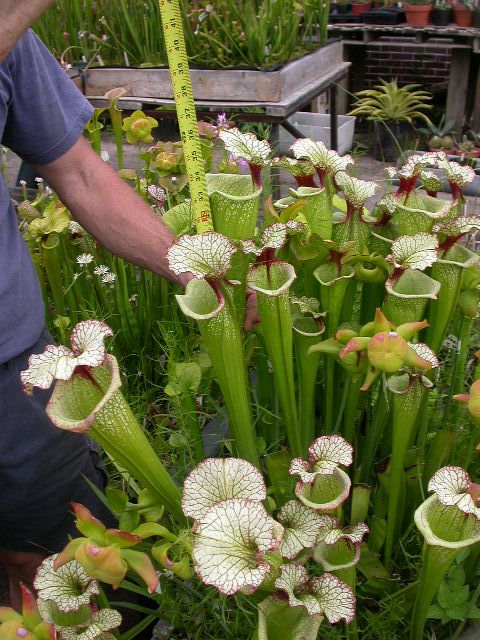 |
|
|
|
Post by snowmom on Aug 2, 2015 9:00:20 GMT -5
wow!
|
|
|
|
Post by stephan on Aug 2, 2015 14:25:31 GMT -5
|
|
|
|
Post by rockpickerforever on Aug 2, 2015 14:47:49 GMT -5
Fixed the photo links. Those are cool! They do not do well in the dry air of SoCal. Nor do they like the chlorine in the tap water here 
From Stephan's Flickr page: The California pitcher plant (Darlingtonia californica) aka cobra lily thrives in very specific conditions. It has adapted to nutrient-limited, high-nickel conditions found in serpentine seeps. This is why it has adapted to luring and trapping insects. Once the insect is inside, it is fooled by the translucent "false exits." When it gets tired, it falls deep into the pitcher where slick walls and downward-pointing hairs keep it trapped as enzymes secreted by the plant digest the proteins.
On the day Justin and I went to see these beautiful plants, it was quite warm -- 104F (40C), but there is a water table that is sufficifient for keeping the soil boggy even in the heat.
According to the USDA Forest Service website (www.fs.fed.us/database/feis/plants/forb/darcal/all.html):
"[The] California pitcher plant is listed as threatened in the Family Lists of Candidate Endangered and Threatened Plant Species in the Continental United States (Smithsonian Institution 1975) [9]. It is also on List Four, Plants of Limited Distribution--A Watch List, of the California Native Plant Society."
California pitcher plant aka cobra lily (Darlingtonia californica)
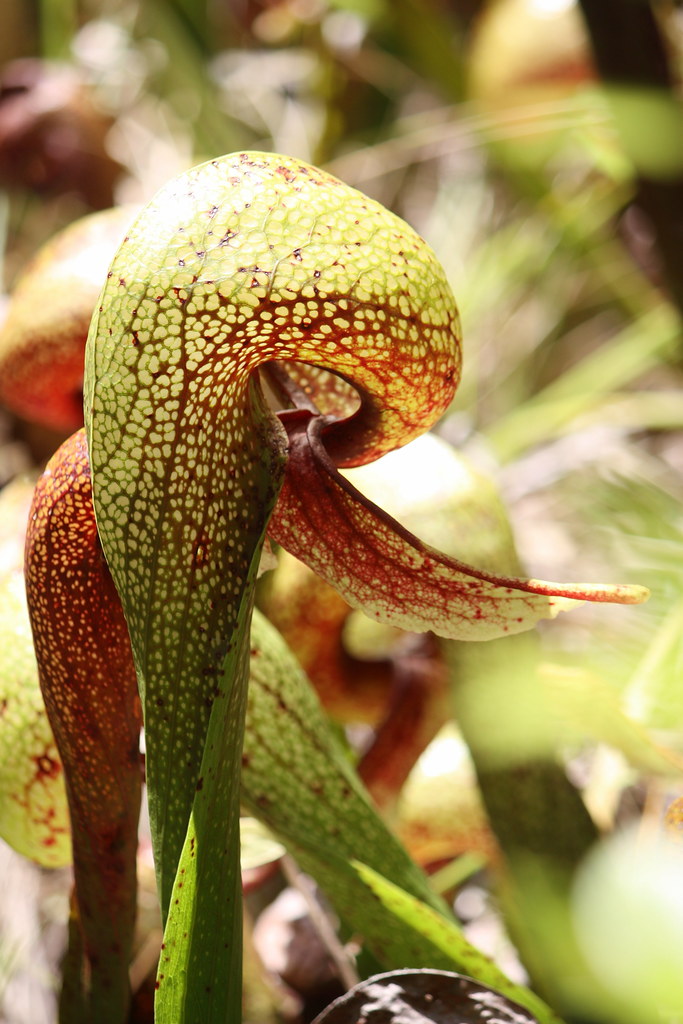
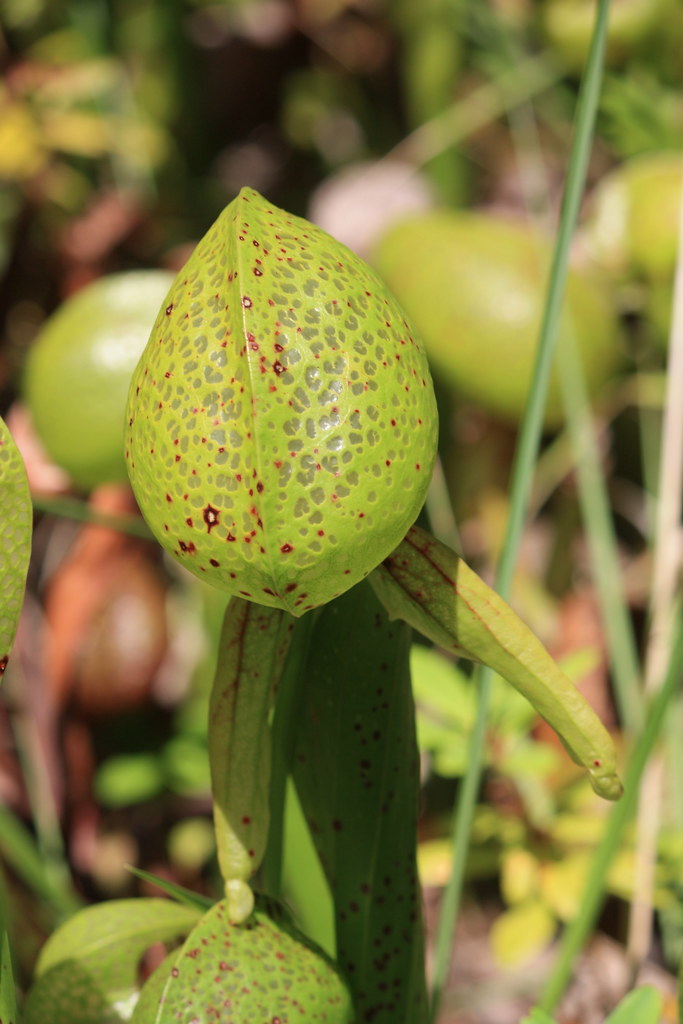
California pitcher plant aka cobra lily (Darlingtonia californica) bog

|
|
lilacmoth
starting to spend too much on rocks
 
Member since March 2015
Posts: 160 
|
Post by lilacmoth on Aug 2, 2015 16:08:51 GMT -5
That is so neat! We bought a venus fly trap and a pitcher plant like the ones in your video from out local nursery a couple months back. I think my son was envisioning the sort of insect carnage that your clip shows, instead they've had to subsist on fruit flies and those annoying little gnats that come out of some of my other potted plants.
I have them in a bright window and make sure their feet are wet, but they don't seem too happy. I guess not enough humidity for them in my dining room.
|
|
jamesp
Cave Dweller 
Member since October 2012
Posts: 36,612
|
Post by jamesp on Aug 2, 2015 20:07:06 GMT -5
That is so neat! We bought a venus fly trap and a pitcher plant like the ones in your video from out local nursery a couple months back. I think my son was envisioning the sort of insect carnage that your clip shows, instead they've had to subsist on fruit flies and those annoying little gnats that come out of some of my other potted plants. I have them in a bright window and make sure their feet are wet, but they don't seem too happy. I guess not enough humidity for them in my dining room. They are tough to grow inside. They do like humidity and lots of sunlight. Plenty of fare for the menu out this way. 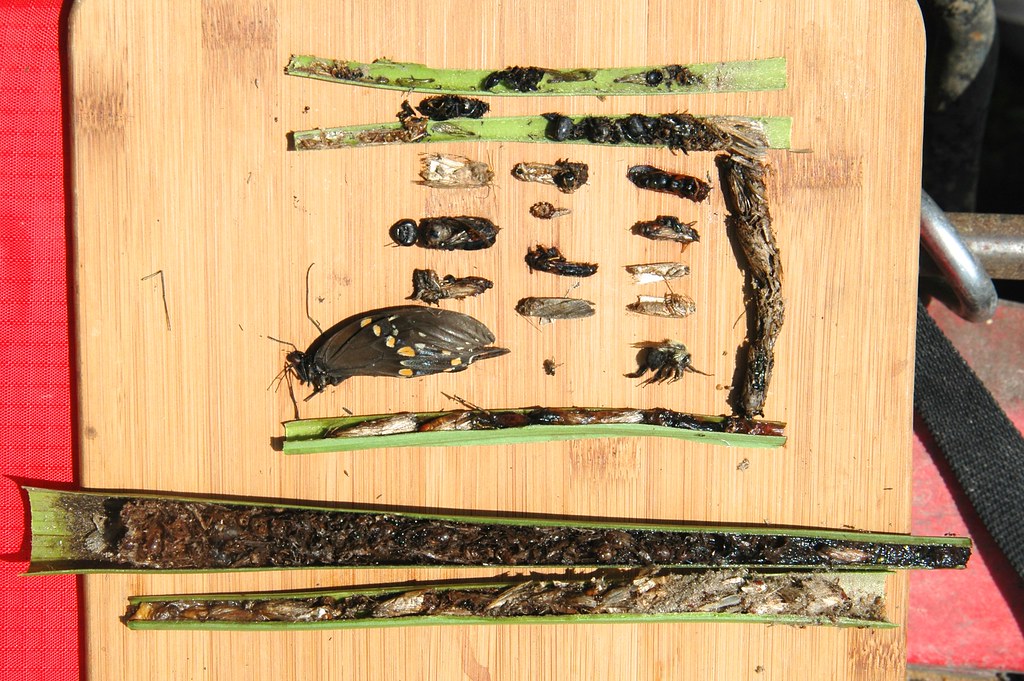 |
|
jamesp
Cave Dweller 
Member since October 2012
Posts: 36,612
|
Post by jamesp on Aug 2, 2015 20:16:54 GMT -5
stephan rockpickerforever I think they all pitchers are protected. There habitat disappearing. Constant water table best which is becoming hard to find. Darlingtonia is a challenge to grow out this way. It is a beauty. Love the Fu Man Chu.
|
|
jamesp
Cave Dweller 
Member since October 2012
Posts: 36,612
|
Post by jamesp on Aug 2, 2015 20:27:53 GMT -5
For some reason the spider eating mud dauber wasp is swarming them in the hot part of the day recently. must be 50 gallons of mud nests in my barns. They are a nuisance. Responsible for several commercial aircraft crashes by plugging pitot tube with mud. No orifice is safe when these guys are around. Mud dauber with mud ball from images  Mud dauber nest  Nest stocked with spiders 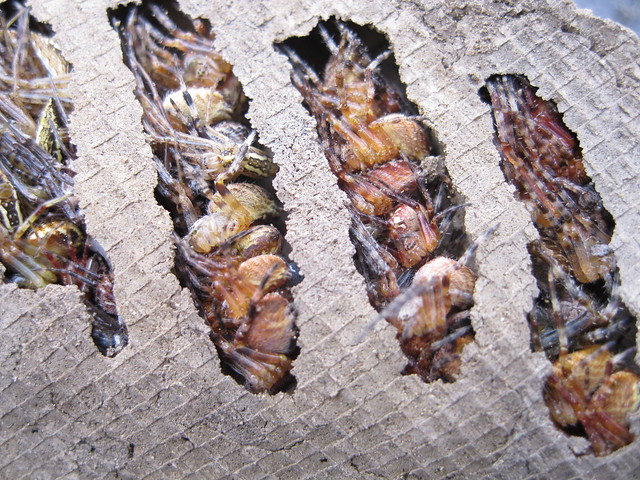 |
|
|
|
Post by snowmom on Aug 3, 2015 6:48:37 GMT -5
if they kill spiders they are OK with me... we had them in IL, I have not seen them here, will have to look them up and see if we have them in Mi. Great photos!
|
|
|
|
Post by vegasjames on Aug 3, 2015 7:04:23 GMT -5
Great photo of the mud dauber.
|
|
jamesp
Cave Dweller 
Member since October 2012
Posts: 36,612
|
Post by jamesp on Aug 3, 2015 7:19:52 GMT -5
|
|
jamesp
Cave Dweller 
Member since October 2012
Posts: 36,612
|
Post by jamesp on Aug 3, 2015 8:36:48 GMT -5
Wasps have bizarre practices:
""A variety of parasitic wasps, ranging from extremely tiny chalcidoid wasps to larger, bright green chrysidid wasps attack mud dauber nests.
They pirate provisions and offspring as food for their own offspring.
Like most other wasps, mud daubers are predators. The females not only build the nests, but also they hunt to provision them.
However, pipe-organ mud dauber males have reportedly brought spiders to the nest, and they aid in nest guarding.""
|
|